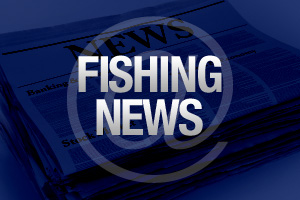New measures to maintain and grow the £1 billion recreational sea angling (RSA) industry and provide “more and bigger fish” in the sea to support it, are revealed by the government today (Friday).
It follows a four-year campaign by anglers to put recreational angling high up on Whitehall’s problem agenda for the fishing industry.
The twin objectives of Defra’s Recreational Sea Angling Strategy for England are to “provide more and bigger fish within a healthy and sustainable ecosystem and environment” and “maintain and increase participation in RSA on a sustainable basis…across all groups in society to provide socio-economic benefits.”
It is seen as a positive move to assuage anglers who were outraged last month when the fisheries minister (Jonathan Shaw) dumped his his predecessor’s commitment to increase the minimum legal landing size for sea bass to conserve the species.
Instead the minister consigned this valuable stock to continued and almost unrestricted commercial predation allowing the slaughter of huge numbers of immature fish before they were even big enough to spawn.
Today’s strategy is intended as a guideline, primarily for the 12 sea fisheries committees which regulate the marine environment, including fishing, for six miles out around the coast of England and Wales.
Defra says it wants to “realise real improvements” for anglers before any control of their activities, such as licensing. It concedes that “large and sustainable fish stocks and a healthy marine environment are the primary elements which affect the angling experience.”
Defra says there should be better access to angling sites, more boat launching facilities, artificial reefs to attract fish and areas of the sea reserved for angling or where only limited commercial fishing was allowed.
The strategy admits that angling is under-represented in sea fisheries management despite its increasingly significant social and economic contribution to the nation. Managements at national, regional and local levels should recognise the needs of RSA alongside other stakeholders.
The strategy idea came from the conservation group of the National Federation of Sea Anglers in 2004 and a wide group of sea anglers helped draft it.
”Ministers and civil servants had no idea then what a sea angler looked like, what they did or how valuable their activities were,” said Richard Ferré, chairman of the National Federation of Sea Anglers. “They have little doubt about that now.”
The anglers’ strategy was taken up by Defra’s coastal waters policy group and presented in detail to all the main stakeholders including commercial fishing, sea fisheries committees and environmental organisations.
“Discussions were vigourous but professional and a document with real positives for anglers has now emerged,” said Mr. Ferré.
“It calls for management plans at a local level for the species of fish most important to RSA, makes a strong case for better control of trawling and gill netting close to the shore and anglers’ desire for the “golden mile” concept of no netting within a mile of the shore.”
He said the strategy calls for sea fisheries committees to be given the objective of developing sea angling, a duty they do not have today, and to make decisions based on socio-economic factors not just on concerns for commercial fishing.
The strategy contains some potential threats to angling, notably licensing and limits on the number of fish anglers could take home. However, these, can only happen under the Marine Bill due to be published next year.
It also calls for co-operation between anglers, sea fisheries committees, local authorities and others in developing voluntary sea angling codes of conduct and best practice.
Mr. Ferré urged all sea anglers to support the NFSA in its continuing engagement with government to achieve its goal of improving sea angling mostly through “more and bigger fish”.






